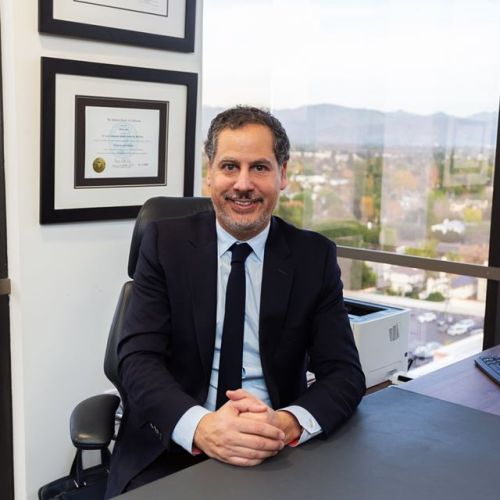IVF: All of Your Questions Answered

If you and your partner have struggled to conceive naturally, you know how disheartening and emotionally exhausting infertility can be. Making the decision to undergo in vitro fertilization (IVF) can give you the optimism and boost of confidence you need to continue trying for a baby — provided you understand what to expect along the way.
Here at California Center for Reproductive Health, we’ve helped countless couples fulfill their family dreams with IVF, and we know that a little information can go a long way in making the IVF process more comfortable and manageable. With that in mind, here are some of the answers to questions we hear all the time from the couples we treat at our Los Angeles-area clinics.
How does IVF work?
IVF, the most common form of assisted reproductive technology (ART), is used to bypass a wide range of fertility problems, including low sperm counts and irregular ovulation.
During IVF, a woman’s eggs are surgically removed and fertilized in a laboratory with either her partner’s sperm or donor sperm. Once the egg is fertilized, the pre-embryo is left to grow for up to five days before it’s transferred to the uterus, where it hopefully implants itself in the uterine lining and continues to develop.
IVF can be done using a woman’s own eggs and her partner’s sperm, or it can be done using sperm or eggs from a donor. IVF can also be done using a surrogate to carry the pregnancy to term.
Am I a good candidate for IVF?
If you and your partner have been actively trying to conceive for a year (or six months if you’re past the age of 35), you may be a good candidate for IVF. The only way to know for sure is by having a comprehensive physical exam to determine the underlying cause of your fertility issue.
IVF has helped women with polycystic ovary syndrome (PCOS), endometriosis, and other physical or hormonal problems; it’s also successfully helped men with low sperm counts or mild sperm abnormalities, as well as women who suffer recurrent miscarriages.
How long does IVF take?
A single IVF cycle includes having fertility hormone injections to stimulate egg production for 8-10 days, followed by the egg retrieval procedure and in-lab egg fertilization. In the lab, the pre-embryo is monitored for quality for 2-5 days before it’s transferred to your uterus. Two weeks after the transfer procedure, you’ll have your first pregnancy test to find out if things are progressing as hoped.
If the first test shows that you’re pregnant, you’ll continue having early blood tests to monitor your progression until an ultrasound can verify a heartbeat, which usually happens 8-10 weeks into pregnancy.
If you’re not pregnant, you can expect to wait one or two full menstrual cycles before going through your next round of IVF treatment. Although some women become pregnant after the first IVF attempt, many women undergo multiple IVF treatments before successfully becoming pregnant.
Are there any restrictions during IVF treatment?
To increase your chances of treatment success, it’s important to follow all basic IVF guidelines and recommendations. This includes quitting smoking at least three months before you begin your first IVF cycle; if your partner smokes, he should quit as well. You should also avoid drinking alcohol or taking herbal supplements of any kind from the outset of IVF treatment.
While you can still partake in low-impact exercises like walking, you should avoid high-impact or vigorous exercise during treatment. After a pre-embryo transfer, you should also refrain from sex until you’re given the go-ahead to resume normal sexual activity.
Does IVF treatment have any side effects?
Medications used to increase fertility can cause a variety of side effects, including headaches, mood swings, breast tenderness, mild cramping or bloating, and constipation.
At California Center for Reproductive Health, we’re proud to offer mini IVF, a gentler alternative to traditional IVF ovarian stimulation that uses lower doses of hormones with great success and with fewer unwanted side effects. Mini IVF is also less expensive than traditional IVF.
Does IVF make multiples more likely?
If you’re only having one pre-embryo transferred to your womb each IVF cycle, then having twins or multiples isn’t a possibility.
If, like many women, you choose to transfer multiple embryos to your uterus to help increase your chances of becoming pregnant, there’s always the possibility that more than one of those embryos will implant and develop.
Interestingly, women who opt for multiple transfers aren’t significantly more likely to become pregnant than those who opt for a single transfer; if they do become pregnant, however, they’re more likely to wind up with twins or triplets.
How successful is IVF?
Your own chances of IVF success depend on your age, infertility diagnosis, reproductive history, and overall health.
In general, IVF success rates for women using their own eggs begin to decline at the age of 30; then, starting at the age of 35, they decline rapidly. Using donor eggs can improve your chances of IVF success if you’re older than 35.
At California Center for Reproductive Health, our IVF success rates — meaning IVF treatment that results in a live birth — consistently beat the national average.
To find out how we can help make your family dreams a reality, call today or schedule an appointment online. We’re ready to answer all of your IVF questions.
Eliran Mor, MD
Reproductive Endocrinologist located in Encino, Santa Monica, Valencia & West Hollywood, CA
FAQ
What does a reproductive endocrinologist and infertility specialist do?
Reproductive endocrinology and Infertility is a sub-specialty of Obstetrics and Gynecology. In addition to managing medical and surgical treatment of disorders of the female reproductive tract, reproductive endocrinologist and infertility (REI) specialists undergo additional years of training to provide fertility treatments using assisted reproductive technology (ART) such as in vitro fertilization.
Reproductive endocrinologists receive board certification by the American Board of Obstetrics and Gynecology in both Obstetrics and Gynecology and Reproductive Endocrinology and Infertility.
When should I see an REI specialist?
In general, patients should consider consulting with an REI specialist after one year of trying unsuccessfully to achieve pregnancy. The chance of conceiving every month is around 20%, therefore after a full year of trying approximately 15% of couples will still not have achieved a pregnancy.
However, if a woman is over the age of 35 it would be reasonable to see a fertility specialist earlier, typically after 6 months of trying.
Other candidates to seek earlier treatment are women who have irregular menses, endometriosis, fibroids, polycystic ovary syndrome (PCOS), women who have had 2 or more miscarriages, or problems with the fallopian tubes (prior ectopic pregnancy).
What are the reasons we are having trouble conceiving?
Approximately 1/3 of the time cause for infertility is a female factor, 1/3 of the time a male factor, and the remaining 1/3 a couples’ factor.
At CCRH, we emphasize the importance of establishing a correct diagnosis. Both partners undergo a comprehensive evaluation including a medical history and physical exam.
Furthremore, the woman’s ovarian reserve is assessed with a pelvic ultrasound and a hormonal profile. A hysterosalpingogram (HSG) will confirm fallopian tube patency and the uterine cavity is free of intracavitary lesions. A semen analysis is also obtained to evaluate for concentration, motility, and morphology of the sperm.
Additional work up is then individualized to direct the best possible treatment option for each couple.
What is IVF? What is the process like?
In vitro fertilization (IVF) is the process that involves fertilization of an egg outside of a woman’s body.
The process starts with fertility drugs prescribed to help stimulate egg development. In your natural cycle, your body is only able to grow one dominant egg, but with stimulation medication we can recruit multiple eggs to continue to grow. After about 8-10 days of stimulation, the eggs are surgically retrieved and then fertilized with sperm in a specialized laboratory. Fertilized eggs are then cultured under a strictly controlled environment within specialized incubators in the IVF laboratory for 3-5 days while they develop as embryos. Finally, embryos (or an embryo) are transferred into the uterine cavity for implantation.
Should I have IVF?
Before deciding if IVF is the right choice, it’s important to sit down with an REI specialist to discuss available treatment options. For some people, other methods such as fertility drugs, intrauterine insemination (IUI) may be the best first choice treatment. At CCRH, we believe each individual couple is unique and not everyone needs IVF.
Is the IVF procedure painful?
While not painful, the fertility medications may some side effects including headaches, hot flashes, mood swings, and bloating. The injection sites may also bruise.
Will IVF guarantee a baby?
Unfortunately, no. Many people think once they start IVF it’s a matter of time that they will be pregnant and have a baby. But according to national statistics per the Society of Assisted Reproduction (SART), on average 40% of assisted reproduction cycles achieve live births in women under age 35. The chances of success then continue to decrease with advancing age.
At CCRH, we employ only evidence-based interventions to ensure patient safety and optimal outcome. While we cannot guarantee a baby, we guarantee that you will receive the best, most advanced, personalized care to help you maximize your chance of a baby.
What is the success rate for IVF?
The average IVF success rate (success measured in live birth rate) using one’s own eggs begins to drop around age 35 and then rapidly after age 40. This is due to the decline in egg quantity and egg quality as a woman ages.
Our clinic’s success rate consistently beats the national average year after year.
Do insurance plans cover infertility treatment? How much does IVF cost?
Individual insurance plans often do not have any coverage for infertility treatments. If you have a group plan, you can call members services to see if they have coverage for infertility (including consultation/workup and IVF).
After your consultation with our REI specialist, one of our dedicated account managers with sit with you to go over the cost of treatment.




